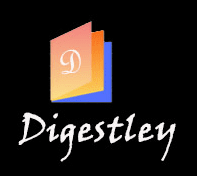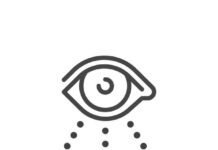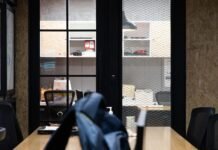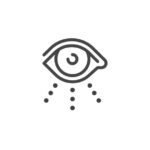There’s more to getting value out of a powder coating machine than just turning it on and cranking out parts. Hidden behind the spray guns and control panels are habits, tweaks, and overlooked adjustments that can quietly boost—or drain—profits. Operators and shop owners who understand these less obvious techniques often stretch margins wider without investing in new equipment.
Table of Contents
Does Regular Ground Testing Amplify Machine Profitability?
Shops that routinely check grounding connections often see better coating transfer and reduced waste. A solid ground path helps powder cling to parts more efficiently, which cuts down overspray and ensures fewer touch-ups. Poor grounding leads to material floating past the part or uneven coating, especially on corners and curves—those tricky spots that cost extra labor to fix. Running a quick ground test before each shift can quietly tighten up quality control and keep more money in your pocket.
It’s easy to underestimate the return from this simple habit, but consistent ground testing extends the lifespan of both parts and the powder coating machine itself. A strong ground reduces arcing and static buildup, which protects internal components from premature wear. In high-output environments, these minor tests prevent expensive downtime caused by part rejection or electrical faults. It’s one of those no-cost practices that delivers long-term gain.
Strategic Powder Recovery Methods Boost Material Savings
Overspray is inevitable—but how it’s handled makes all the difference. Shops that invest in proper powder recovery systems often reclaim more material than expected. Recovered powder, when filtered correctly, can be reused multiple times without sacrificing finish quality. A good recovery strategy doesn’t just reduce waste—it brings back money that would’ve landed in a vacuum bag or on the shop floor.
Operators who monitor their powder feed system closely can tweak reclaim ratios, adjusting based on part geometry and production speed. This avoids clumping or inconsistent coverage caused by reusing powder that’s been handled poorly. A powder coating machine with efficient reclaim systems in place will burn through less material per job, boosting ROI with every pass.
How Maintenance Intervals Directly Impact Operational Margins
Neglecting regular maintenance quietly eats into profits. Filters clog, hoses wear out, and build-up on nozzles causes spray patterns to skew. Each of these small issues might go unnoticed for a shift or two—but the cost builds up fast. Parts that need rework, increased powder use, and higher energy draw can all trace back to poor upkeep.
On the flip side, shops that follow strict maintenance schedules see fewer shutdowns, longer machine life, and more consistent results. Lubricating moving parts, checking fluid levels, and keeping spray booths clean allow the entire powder coating system to work at full efficiency. These aren’t just chores—they’re performance upgrades that protect margins over time.
Particle Charge Efficiency as the Key to Cost Reduction
It’s easy to forget how crucial electrostatics are to the process. If the powder isn’t charged properly, it won’t bond to the part well. That means more powder use, more overspray, and sometimes—complete part rejection. Operators who fine-tune their electrostatic settings based on part type, humidity, and gun distance often see their material usage drop significantly.
The internal charge modules within a powder coating machine aren’t plug-and-forget systems. Their efficiency can decline without warning, especially in dusty environments or with heavy use. Monitoring charge levels regularly and cleaning electrode tips helps ensure every particle is pulling its weight—literally.
Machine Calibration Cycles That Protect Long-Term Profits
Calibration is more than a tech term—it’s the foundation of consistent output. Machines that aren’t calibrated drift over time, causing overspray, uneven thickness, and low transfer rates. A properly calibrated powder coating machine sprays with the right pressure, voltage, and feed rate every time. That accuracy pays off in fewer rejects and faster turnaround.
Even experienced operators can’t fully compensate for a poorly calibrated system. Having a regular schedule for recalibrating guns, hoppers, and controls avoids guesswork. This is especially true for automated setups where slight misalignment can snowball into full-batch failures. Shops that build calibration into their process see steadier results and healthier margins.
Are Operator Techniques Quietly Draining Your Returns?
The powder coating machine is only as efficient as the hands running it. Operators who hold the gun too far away, spray at the wrong angles, or use inconsistent passes burn through more powder and produce inconsistent finishes. Training isn’t just a first-week task—it should be ongoing. Even small corrections in movement patterns can lead to big material savings.
Shops that record and review operator habits often uncover surprising inconsistencies. Adding visual guides or laser-assisted lines can help maintain optimal distance and path. A skilled operator paired with a fine-tuned machine becomes a powerful combo for maximizing every dollar spent.
Leveraging Energy-Efficient Heating for Increased Margin Gains
Heating is one of the most power-hungry parts of the process, and poorly insulated ovens or fluctuating temps drive costs up fast. Upgrading to energy-efficient burners or sealing heat loss zones can immediately reduce energy bills. For shops running multiple cycles a day, those savings stack up quickly.
Some powder coating ovens (commonly referred to as powder coating machines) include advanced insulation and zoned heating. These features allow for tighter temperature control and quicker recovery between batches. Keeping an eye on heat performance—alongside cycle time and energy draw—turns your heating system from a cost center into a margin booster.
Apart from that, if you are interested to know about “Truck Driver Requirements” then visit our “Business” category.
















